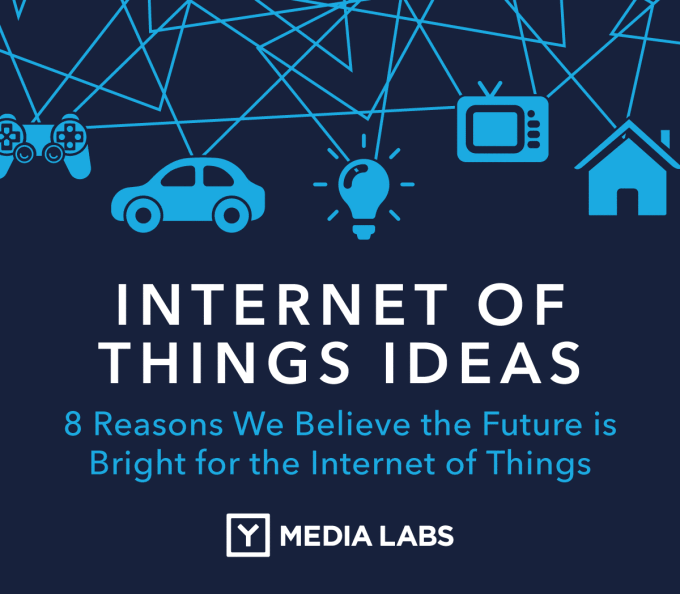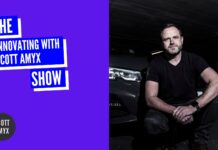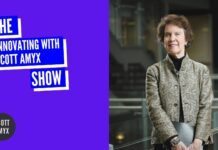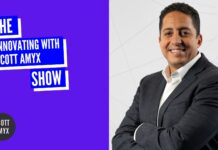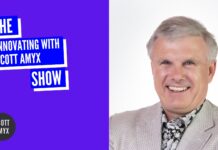
The Internet of Things (IoT) is a very hot topic these days.
Even people who are not technologically savvy can’t wait to get their hands on the next smart door lock, thermostat, sensor, security system, etc…
Or, better said, get a hold of new products designed to replace the ‘boring’ physical objects around us with gadgets that can ‘speak’ at us via a mobile app.
What if I told you that IoT as we know it today is just the beginning of a new technological revolution and that we’ve only scratched the surface of what the Internet of Things can actually do for us?
Beyond each individual object, there are certain macro issues that the IoT industry promises to solve for. In this article, we’ll highlight eight different life changing improvements that the Internet of Things industry is bringing to life.
Are you excited? You should be!
We’ve divided them into 8 chapters that you can access from the links hereunder:
1 – Things are getting interconnected: How IoT is providing users with an experience infinitely more personalized.
2 – IoT makes people more aware: How IoT increases awareness of the world around us and decreases the time we need to spend on completing certain tasks. Contribution from Glen Gilmore included.
3 – Interconnected cars and trucks: Our driving experience will be more enjoyable, safe, and efficient.
4 – IoT cares for your health: How wearable technologies are becoming automated tools that monitor our physical bodies. Contribution from Bill Chamberlin included.
5 – IoT is simplifying our work: Discover some of the endless opportunities to improve the operational efficiency of a company. Contribution from Scott Amyx included.
6 – IoT devices for a smarter city: A trillion market opportunity to make our collective lives interconnected. Contribution from Vernon Turner included.
7 – IoT as a service will change the way we do business: Why the future is a blend of software and hardware pricing models. Contribution from Scott Amyx included.
8 – IoT keeps soldiers out of harm’s way: Voice controlled drones and much more.
Mid Term challenges for IoT devices: Possible solutions to today’s IoT issues. Contribution from David Pogue included.
#1 – THINGS ARE GETTING INTERCONNECTED, PROVIDING USERS WITH A PERSONALIZED EXPERIENCE
IoT is redefining connectivity in two ways that directly benefit the end user:
1) Users connecting to smart devices to accomplish a task;
2) Smart devices connecting with ordinary objects to deliver additional information, functionality, or value.
In other words, IoT allows us to manage aspects of our lives without thinking or worrying about it. That is the power of interconnectivity – it minimizes the prospect for error and makes smart devices work for us.
By using our smartphones as a hub we can now connect directly to our living room and turn off the lights, check if the front door is locked, see if we need to go grocery shopping on the way home, and anything in between.
This is not the future; several IoT applications are already available to the mass market, and more and more people will buy IoT products in the next years:

#2 – IoT MAKES PEOPLE MORE AWARE
Until recent technological innovations started showing us their potential, we never truly worried about a lot of trivial things in our lives.
Or if we did, we resigned ourselves to the fact that there’s little or nothing to b done about it.
For example, who hasn’t once worried that they’ve left the stove on or forgotten to lock the front door? But what could you do about it once you’d arrived at work?
Not much really. Smart appliances, smoke detectors and smart locks are all gradually rendering these worries obsolete.
But IoT devices are not only solving the immediate problems we have. They also ‘speak’ back to us.

My Nest Aware smoke detector alerts me if there’s any problem in my apartment with CO2 levels. My smart lock tells me if someone entered my house in my absence. My Nest Cam sends me a recording of anyone going through my living room when I’m away. These are just a few examples of devices that send information to me about topics that I never thought of more than in passing.
#3 – INTERCONNECTED CARS ARE MAKING THE DRIVING EXPERIENCE MORE ENJOYABLE, SAFE, AND EFFICIENT
As we all know, Google, Apple, Tesla, Uber, and Lyft are all investing significant amounts of money into building cars that will eventually drive themselves. There is a lot of money to be made in the field of smart cars.
By their very nature, self-driving cars are an IoT innovation. How?
They communicate, absorb and act on a huge number of data points which ensure that they follow the right path, hit the brakes when necessary, and function appropriately.
Of course, a car doesn’t have to be fully automated to benefit from IoT innovations…
Think of cars that can self-diagnose problems, or that automatically call an ambulance and the police when an accident occurs. These IoT advancements are already here.

Another car-related topic in which IoT is changing the status quo is the emerging industry of connected trucks.
It’s nothing fancy or glamorous, but we’re optimistic about its prospects too. Location tracking, smart routing, apps monitoring a driver’s hours of service, and automatic adjustment of tire pressure are advances already here. Volvo’s remote diagnostics platform for trucks is already sending automated alerts to companies around vehicle performance.
The future of connected trucks is bright, whether we think it a hot topic or not.
#4 – IoT HELPS US KEEP FIT OR GET FIT AND MONITORS OUR OVERALL HEALTH STATUS

There is a reason why companies like Fitbit, Apple, Motorola and similar big players shipped 84 million smart bands and watches in 2015.
People love to see data about their physical activities. Wearable technology users are really excited to access information about their daily movement and exercise patterns.
What is equally amazing is that with the rise in popularity of wearable technology, we’ve also seen a gamification of fitness activities. From fitness apps, to notifications on the wrist band, to competitions like MatchUp.io’s Move2Win, IoT is helping pave the way to a healthier nation.
Wearable technologies are also reshaping the medical field and how doctors use technology to assist their patients. Apple, Samsung, Google and other companies are investing heavily in the emerging field dubbed simply ‘mHealth’, as seen at the recent Apple event in March and the launch of ResearchKit and CareKit.
Patients with chronic conditions can now be reminded when they need to take their treatment by their wristbands. In the future, autism could be detected at a much earlier stage, and diabetics could be warned about potential sugar crashes well before they happen.
Wearable technologies are designed to take IoT beyond merely allowing users to collect the data they believe relevant; they are already becoming automated tools used to monitor our physical bodies, alerting us when there’s an issue that requires our attention.
#5 – IoT IS SIMPLIFYING OUR WORK TOO
IoT is not just about physical objects at home that can make our lives better; despite being the most talked about aspect of IoT, that’s only a small part of it.
Every company is trying to reduce the cost required to serve its customers, also known as the operating costs of running a business. Think of factories and metal plants that are already benefiting from sensors installed in their facilities that may provide preventative actions which avoid malfunctions or, more importantly, avert loss of human lives.
Furthermore, consider technologies that can monitor the conditions of a mine shaft and ensure the overall health and safety conditions of miners. Consider even the very simple Nest thermostat utilized in businesses, automatically adjusting the temperature in a room when the last employee leaves for the night. The opportunities are endless.
There are so many different processes out there in companies both large and small which have started improving operational efficiencies through the assistance of various IoT technologies released to market over the last couple of years.

#6 – THE SMART CITY: HOW OUR COLLECTIVE LIVES ARE BECOMING TECHNOLOGICALLY INTERCONNECTED
The smart city is still a work in progress both when it comes to defining exactly what we mean by the term as well as its implementation.
At the highest level, a smart city is one in which various ‘public goods’ the city provides to its citizens become interconnected. This relates generally to the use and dissemination of energy, the transportation system, the infrastructure, and the healthcare systems. Though the details are still being hammered out, some analysts are already predicting that the Smart City is a $1.5 Trillion market opportunity.
Let’s start with an obvious example, our ability to get an Uber or a Lyft with the touch of a button. The ride sharing industry helps decrease the number of cars on the road and as such helps reduce gas emission levels. Ridesharing is the most well-known example of an IoT invention wherein our smartphones connect us to a service, on the go, by using the geolocation function of our mobile devices.
If we just scratch beneath the surface of smart city IoT innovations, we discover so much more….
Notably, the issue of sensors that are being installed on street lights and traffic signals (Amsterdam is one city which has implemented this at scale). Rather than keeping the street lights on throughout the night, wasting energy, all street lights are interconnected and turn on as they detect movement on the streets. The mass adoption of this technology alone could save cities billions of dollars in energy bills.
And there is another sensor based IoT invention that has been around for a while now; every time I visit the Fashion Outlet Mall in Chicago, as soon as I enter the parking lot, I see small screens informing me how many parking spaces are available on each floor of the parking lot. The entire complex has small sensors installed near each parking space and as a car is parked in a spot it sends a signal which updates the count of available parking spaces for each floor.
Imagine being able to optimize and monitor the delivery of water to every household in a city and automatically inform the authorities when an issue requires attention. Or reflect on the Smart Meters that ComEd has been installing all over the nation so that there’s no need to estimate the electrical bill of each customer every month or send technicians to collect meter reads.
Expect to see more and more innovations in this field because cities and private companies alike are desperate to reduce their operational costs.

#7 – IoT AS A SERVICE WILL CHANGE HOW WE DO BUSINESS TODAY
Last Thanksgiving, Nest sold its signature thermostat bundled with its Nest camera and the smoke & carbon alarm detector; the discount was very steep. If we think of the Nest products in the traditional sense of purchasing hardware, the decision to drop prices considerably would not have made much sense. But, ultimately, Nest wasn’t just selling hardware, was it? You can purchase the Nest Cam at a discount but for it to be truly effective (e.g. catch a thief on camera) you’ll need to also purchase the $10 per month back-up service too.
As more and more IoT products hit the market we’ll see a similar blend of software and hardware pricing models.
And this is just the tip of the iceberg.

IoT as a Service in which machines send data to centralized locations so that it can then be used in a meaningful way for the user will become a common occurrence.
Take the Automatic Adapter as an example – an OBD II device which you connect to your car to get handy metric data about your driving habits that doubles down as an engine diagnostic tool. In addition to helping people understand their driving habits, the vehicle’s fuel efficiency, and providing location tracking, this small device also calls 911 in the case of an accident. While this particular service is free of charge, you can see how an IoT device can become more than a simple piece of hardware; it becomes a gateway for selling additional services.
And a lot more is coming, as Scott Amyx explains below:
#8 – IoT KEEPS SOLDIERS OUT OF HARM’S WAY (and could help all of us be safe)
You may not necessarily think of drones as being part of the IoT innovation arsenal but they certainly are. Drones, large and small, have already received international attention – the US being the leading force in using unmanned aerial vehicles for some time now.
But drones as concepts have incredible potential for various aspects of everyday life.

The obvious one is for defensive purposes. Drones have certainly been used for a long time but their true potential is only now being discovered. Drones can now be voice controlled, easily reprogrammed, and deployed in battle as a fleet instead of just as individual machines, collecting massive amount of data that can be used to keep soldiers out of harm’s way.
Yet there are other use cases which could be equally beneficial. For us. At home. Think for a second of our own safety and protection in our homes.
What if drones were to be used as a supplement to the police force, collecting and transmitting data in real-time, helping prevent crimes, or at the very least helping catch perpetrators? The technology needed to make this happen already exists.
What about drones which could collect information about people having a medical emergency and automatically dispatching an ambulance before anyone even thinks to call 911?
The point is this: advancements in interconnectivity, data analysis and transmission show very promising signs that drone technology can be a very helpful tool for us all.
SOME MID-TERM CHALLENGES WITH IoT DEVICES
There are currently 6.4 billion IoT devices in use across the world, with consumers and businesses spending a staggering $264 billion on acquiring IoT products this year alone. Despite that, there are some obvious shortcomings we’ve yet to tackle.
For example, in today’s world most IoT devices do not talk to each other. In some cases, there are technical limitations. In other cases, it’s because you’re using devices from companies that are competing with each other.
For the time being, the biggest downside is that IoT users are forced to download, use, and manage an ever-increasing number of applications instead of simply using one app to access all of their IoT devices.
“Works with Nest” is one example of an initiative in which products built by companies unrelated to the three Nest products currently on the market are starting to integrate and ‘talk’ to each other.
In addition, most IoT devices must be connected to the Internet in order to make use of their full potential. As more and more devices become available online, they’re already putting pressure on Wi-Fi networks; their ability to handle all of the information being sent to the cloud without slowing down the entire network becomes a concern.
One of the biggest challenges we have yet to solve is the overall wireless infrastructure required to keep all of our smart products ‘alive’. Google Fiber is one solution that promises to fix this problem, at least in the short term, but as we know, their own expansion program has been slow to implementation and adoption.
An obvious issue is the lack of a standard that’s recognized and used by all IoT devices. We asked Davide Pogue for his take on this:
SO IS THE FUTURE FOR INTERNET OF THINGS REALLY BRIGHT?
IoT is a very simple concept: allow machines to talk to each other in order to provide contextually relevant information to a wide variety of audiences. As an end user, the benefit is that as various devices in your arsenal communicate wirelessly you get the information you want, when you want it, and with the potential to act on it immediately.
By 2020, there will be approximately 40 billion IoT devices out there. Or quite possibly a lot more.
And there are two things you can bet on: these devices will make our collective lives a lot better and our smartphones will be the central hub connecting them all.
For now, we’ve only scratched the surface of what IoT innovation has to offer. That’s the most exciting thing about this field; opportunities are endless. It is both amazing and humbling to realize that we’ve entered a new phase of technological advancement where we simply cannot grasp the true potential.
All we know for sure is that we want it ASAP, preferably with the next 2-day shipping package from Amazon.
Refer to the full article on Y Media. Published on July 26, 2016. Author Codrin Arsene.


